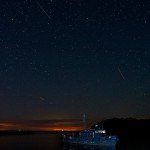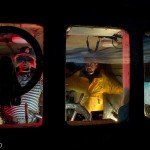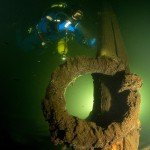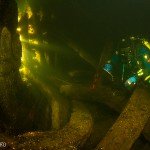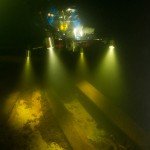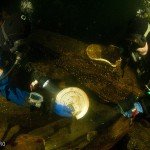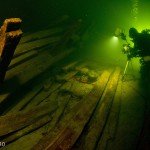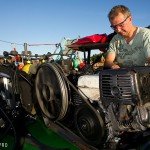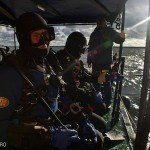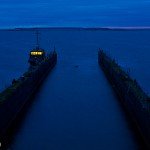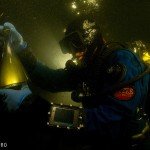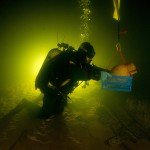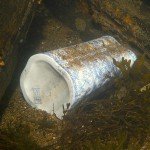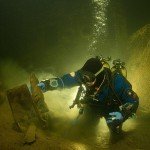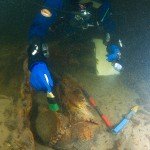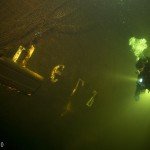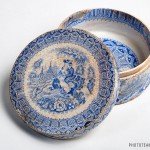Short photo set from our Secrets of Shipwrecks project. It is a part of Underwater Russian Heritage Project. Underwater Russian Heritage Project was supported by СJSC “Baltic Marine Company” (ЗАО «Балтийское морское общество»)
- Our research ship (expedition 2012, August) anchored off the coast of Gogland. Meteorites on sky are The Perseids (a prolific meteor shower) at the peak of its activity. During the peak the rate of meteors reaches 60 or more per hour.
- scientific director of the expedition Lukoshkov (right) and captain of our research vessel Sinitsyn (left) in the wheelhouse
- scientific director of the expedition Lukoshkov analyses the data obtained.
- Seaman throws a rope to UW archaeologists to help them coming on board.
- Archaeologist R. Prokhorov inspects a giant anchor at a shipwreck of Russian military galliot “Tobias Enge,” crashed near Gogland at stormy night, October 28, 1771. In the crash the entire crew (45 people) were killed, and circumstances of the tragedy were unknown. Now we can argue that the galliot, like “America”, was unable to round the cape of the island, was broken, and immediately went to the bottom.
- In the shipwreck hold.(America)
- Archaeologist R. Prokhorov does technical photoshooting. Apparently these fragments belong to the Russian military galliot “Tobias Enge,” crashed near Gogland at stormy night, October 28, 1771. At the right bottom corner – a galliot’s steering wheel. Steer wheels were invented only in the late 17th century and were not similar to the modern wheels.
- Mauser bullets. German landing ship. In September 1944 Germans attempted to take the Hogland island from their Finnish former allies, but were repulsed with heavy losses.
- In the hold of Luisa shipwreck
- Ceramic helps to determine time of death of the vessel, and thus indirectly to identify it. Shipwreck of Luisa
- Archaeologist R. Prokhorov does technical photoshooting. Luisa shipwreck
- Storm is rising over the Gogland island
- After storm
- UW archaeologist Igor Galayda after dive
- UW archaeologist Roman Prokhorov refills empty tanks
- Archaeologists are ready for the dive
- Our research vessel is secured alongside floating submarine dock. Moshchny island.
- One more finding by UW archaeologist Roman Prokhorov
- UW archaeologist Igor Galayda salves a jug found on a shipwreck
- Sometimes it is really challenging – UW archaeologist R.Prokhorov was trapped into the net (Luisa shipwreck broadside)
- Setting plastic marks for technical drawing of the shipwreck. Luisa.
- UW archaeologist Igor Galayda found a porcelain jar. America shipwreck
- Ceramic helps to determine time of death of the vessel, and thus indirectly to identify it.
- UW archaeologist does technical drawing of the place.
- UW archaeologist Igor Galayda and part of the sailing rigging. America shipwreck
- UW Archaeologist Ivan Galayda measures the remnants of a gun carriage. America shipwreck.
- Archaeologist have found a glass bottle at Luisa shipwreck. Such findings are very important for correct identification and dating of the wrecks.
- Archaeologist cleans ship head figure
- frigate Oleg
- Russian Navy transport “America” shipwreck
- Underwater findings. Seasonings in bottles belonged to captain of “America.” Pepper and oil are still inside
- UW findings. Ceramic helps to determine time of death of the vessel, and thus indirectly to identify it. And usually it turns that each thing has its own story.
- Underwater findings. glass bottles

